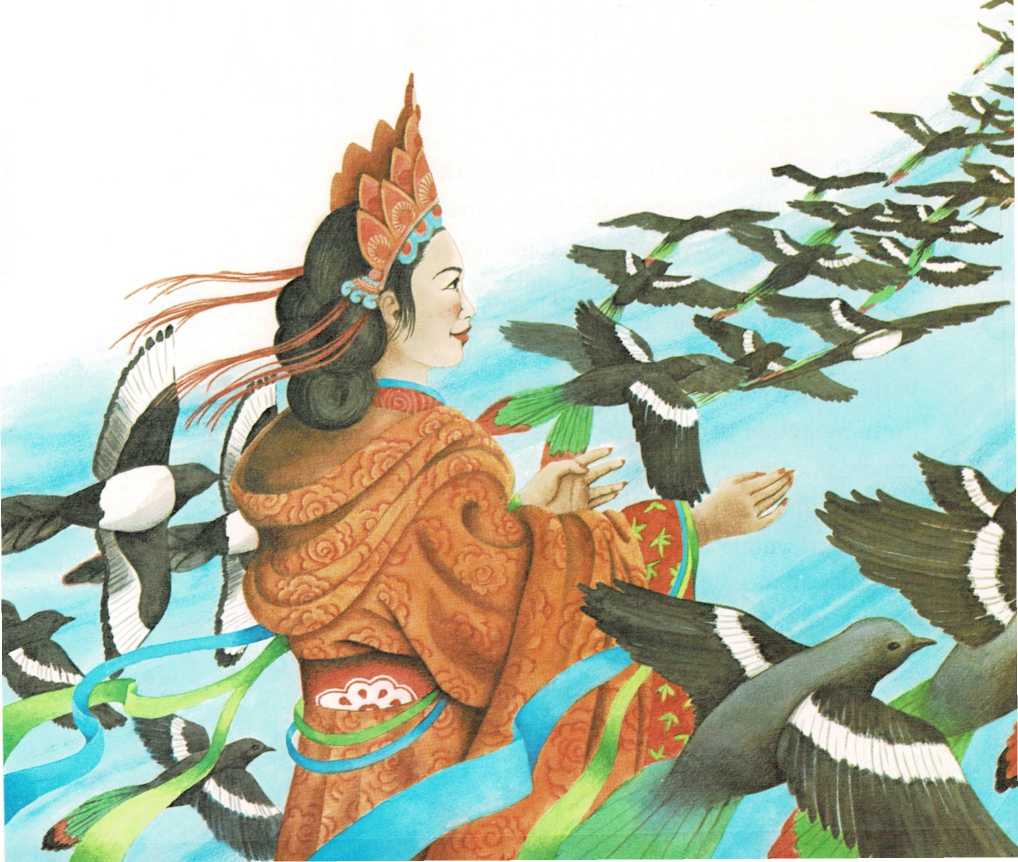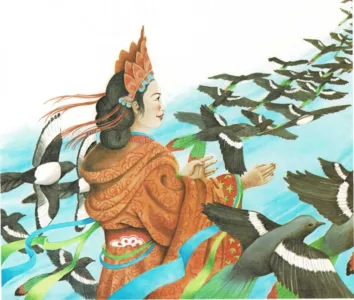Tanabata Matsuri
The princess and the cowherd
Once upon a time, two stars, Vega and Altair, fell in love. Vega was a
princess, the daughter of the king of the heavens. Altair was a cowherd.
Even so, the king allowed them to marry.
Vega was so happy, she no longer did her weaving. And Altair was so in
love he let the cows wander away. This made the king angry. He sent
Altair to live on the far side of the Milky Way—the Heavenly River.
And


he ruled that the two lovers might see each other only once a year—on
the seventh day of the seventh moon.
When this day came, Vega could not find a way to cross the Milky Way.
She began to weep bitter tears. A flock of magpies saw how sad she was
and took pity on her. The magpies spread their wings to make a bridge
across the Heavenly River. Vega ran lightly over their wings and into
the arms of the waiting Altair.
Ever since, according to this ancient Chinese fairy tale, this is the
way Vega and Altair have met. But if it rains on this day, the magpies
cannot make a bridge. Then, Vega and Altair must wait another year.
The Japanese have long loved this story. They call the day Tanabata
Matsuri or \”Weaving-Loom Festival.\” It is also known as the Hoshi
or \”Star Festival.”
In most of Japan, Tanabata is celebrated on July 7. But one city,
Sendai, joyously celebrates Tanabata Matsuri on August 7.
In Sendai, long bamboo poles are set up so that they lean out over the
streets. Colorful paper chains and streamers are fastened to the poles.
And bamboo branches are placed in front of houses or in gardens. The
children decorate the branches with colored figures made of paper.
The day after Tanabata, these bamboo branches are put into the nearest
stream. They are then allowed to float away. Doing this brings good
luck.

